Recommendation points
- Timing and soil preparation
- Formwork, reinforcement
- Preparation of concrete mix
- Filling, leveling, ironing
The blind area around the house no longer performs a decorative function, it protects the soil near the foundation from getting wet and uneven softening. The device of the blind area has its own tricks and technical requirements, which we will share with readers in our today’s review..
Timing and soil preparation
Work on the construction of a concrete blind area should be carried out as early as possible. From the moment the foundation took over more than a third of the design load, it already needs protection against soaking. Therefore, it is not recommended to leave a house with lined walls for the winter without a blind area. The heaving forces are capable of doing their “dirty” deed even in one season. You can plan work for almost any time of the year, but taking into account weather conditions, observing the technology of working with concrete.
The first stage is digging a trench along the outer perimeter. The bottom should be located 30-35 cm below the final level of the coating, and it, in turn, should be 50-80 mm higher than the adjacent fertile soil.
The width of the blind area cannot be less than the cornice and pediment overhang above it and cannot be less than 60 cm. In general, it is defined as 50% of the foundation depth. For basement buildings on soils of the first type of subsidence, the width of the blind area can reach two meters.
General scheme of a concrete blind area: 1 – parent soil; 2 – formwork; 3 – concrete blind area; 4 – clay castle; 5 – gravel preparation; 6 – sand preparation; 7 – damper tape; 8 – fittings
When the trench is open, a clay castle is formed at the bottom with 10–12 cm thick oily clay. Above, make two layers of incompressible and non-porous materials: first, crushed stone with a layer of 50–60 mm, then up to 100 mm of sand. Be sure to dig the so-called “tooth” along the outer edge of the trench – a groove of about 20×20 cm.
The level of the finished sub-layer should be 45–60 mm below the planned level of the cover. It should be borne in mind that the thickness of the layers of sand and gravel must be constant at each point of the trench, so the deepening for the “tooth” after the backfill remains.
To prevent mixing of the layers of the underlying layer, separate them with a sheet of geotextile, and separate the substrate itself from the compacted soil with a drainage geocomposite. On heavily weathered and, sometimes, medium-weathered soils, insulation of the blind area may be required. It can be made with plates of extruded polystyrene foam, which are laid on top of a thin (10-15 mm) sand filling over a layer of crushed stone, and then another layer of 50-60 mm of dry sand is covered.
Formwork, reinforcement
It is considered correct to install storm sewers in order to divert precipitation and upper water into the drainage system. Water from the blind area is collected in a tray at the edge, from where it is discharged into a drainage trench. If a system of hidden channels is provided for these purposes, they are arranged at the stage of preparing the underlying layer. During the preparation of the reinforcing layer, you should prudently lay all the necessary elements of the drainage system.
The formwork for the blind area has the simplest device. It is only necessary to knock down a pair of boards 20×100 mm in parallel into shields, connecting them with jumpers every 50-60 cm. The formwork is installed under the side of the trench, the height of the upper edge is adjusted according to the final level of the coverage. For ease of alignment, with an interval of 150 cm on the outside of the shields, wooden stakes are hammered into which the formwork is screwed with self-tapping screws. After that, from the outside, the shields are propped up with a dump of soil from the adjacent territory.
The most important point in the construction of the blind area is that it should not be monolithically connected to the basement of the building. The best scheme for the drainage of external waters, including those flowing down the wall, is observed when two layers of concrete are separated by a material with a sufficiently high plasticity, provided that the finish of the basement is admitted to the blind area from above, preventing water from seeping through the separating layer. If the plinth is not going to be finished with a curtain cladding, its lining should be started with an EPPS damper strip, which compensates for the “floating” of the concrete slab.
The easiest way to achieve such a device scheme is to paste over the lower part of the base with a strip of polyurethane foam about 20 mm thick. The separator sits on the glue mastic, as the installation proceeds, the upper edge is aligned with the cord, setting the slope of the coating towards the adjacent soil at least 3: 100. However, the separating material can be cut along a common line after the glue dries, but the principle remains the same: the formwork and the separating layer serve as beacons for leveling the concrete mixture.
The blind area is reinforced with steel mesh with a rod thickness of 8 mm and a cell size of up to 200 mm inclusive. The reinforcement is stacked in one row and placed on distance supports that regulate the protective layers of reinforced concrete at least 45 mm above and below and about 60 mm on the sides.
Preparation of concrete mix
The blind area is allowed to be cast with concrete prepared on site, but the requirements for the quality of the mixture are quite high.
The desired concrete strength class is B25 or higher. The feedstock should be measured by volume, so as not to take additional corrections for the moisture content of sand or gravel. In total, 20 liters of sand and 35 liters of crushed stone or large granite screenings are added to 10 liters of cement grade 500 for the preparation of concrete.
To ensure the homogeneity of the mixture, in the concrete mixer, first, cement milk is prepared with the addition of half the calculated amount of water and sand. After 2–3 minutes of mixing, you can add any remaining filler and spray the mixture with water as needed. The final consistency of concrete is a crumbly mixture with a low moisture-to-cement ratio, while all stones should be evenly moistened.
A continuous mixing cycle of one serving should take at least 15 minutes. To entrain air and provide additional plasticity, add one tablespoon of liquid detergent per bucket to the water. As a result, concrete has a frost resistance class of at least F200 and a water absorption resistance of at least W6. If necessary, enhance the desired properties with modifier additives.
Optimum consistency of concrete for pouring formwork
Filling, leveling, ironing
The blind area should be poured from the most distant part, gradually moving closer to the place of concrete preparation. The formwork is filled with the mixture almost to the top, after which the concrete is subjected to bayonet or vibration shrinkage.
The need for transverse separation of the blind area with expansion joints is determined by the operating conditions. For the shaded sides of the building, this is not necessary, but in the open sun, the blind area should be poured, dividing the mixture with strips of expanded polystyrene every two widths.
When leveling, it is convenient to walk straight through the liquid mixture while wearing rubber boots. Armed with a rule-rail, check the degree of filling of the formwork and the depth of immersion of the tray box into the concrete. If necessary, upset the formwork with light hammer blows, but do not overdo it: it will be much more difficult to raise the edge higher.
When both beacons and the edges of the tray are at the same level, add a small amount of the mixture and stretch it out with a strip. It is not necessary to smooth the surface, it is enough to ensure its flatness and correct slope, remove depressions in which water can collect.
After alignment, a board is laid flat on the edge of the formwork and the tray, on which a slight pressure is set for 10-12 hours of preliminary setting of the mixture. The next 7-10 days, the blind area will need to be sprayed with water from a hose once a day and then covered with a film.
Two weeks after pouring, the formwork can be broken and wet ironed. For him, a mixture of sand and cement is prepared in equal proportions, instead of water, three parts of milk of lime and one part of liquid glass are added to the solution. The finished mixture should have a slightly thicker consistency than cream.
Before ironing, the blind area must be well moistened and wiped with a metal brush, disrupting the structure of the crust formed on the surface, then sweep and rinse again. After pre-drying, the ironing mixture is poured over the surface from the base to the outside, and then leveled with a wide spatula in the longitudinal direction. The iron layer must be at least 1.5–2 mm, the time for the mixture to solidify is at least 3 days with periodic moistening of the surface.

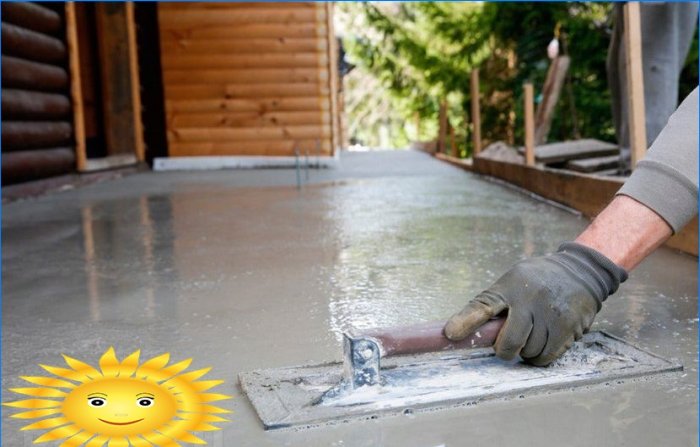
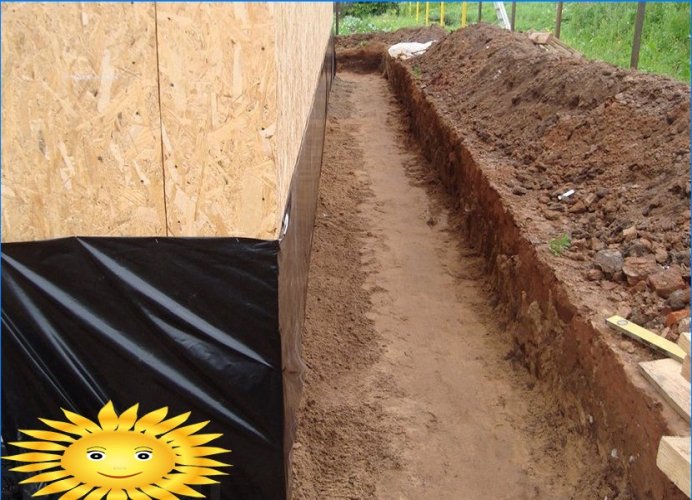
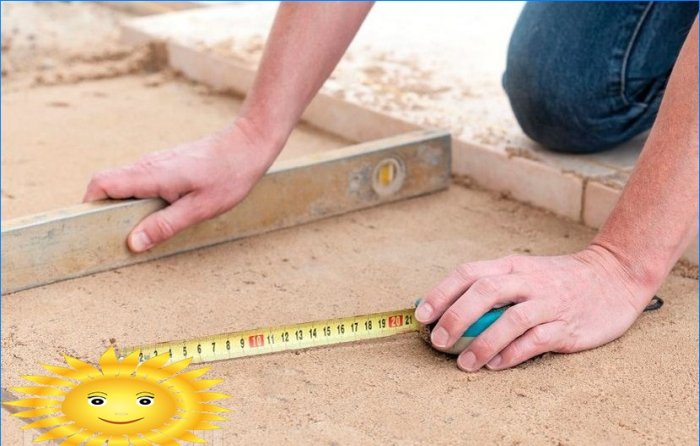
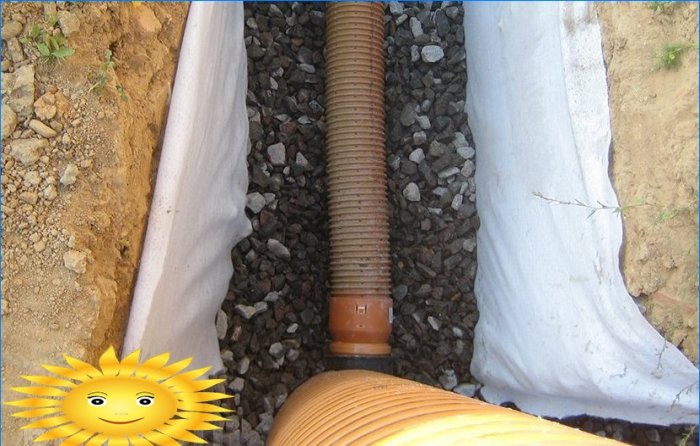

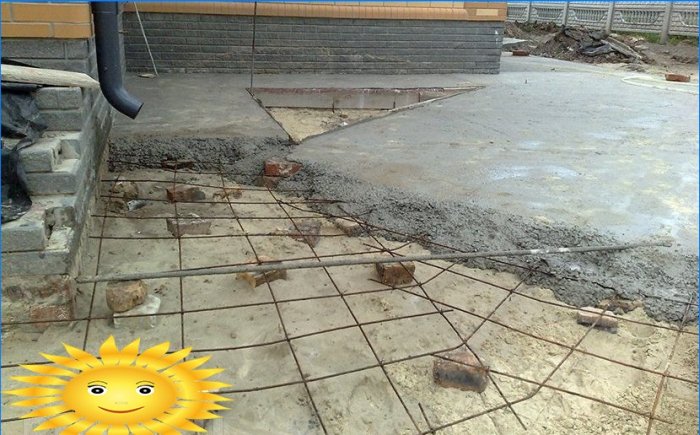
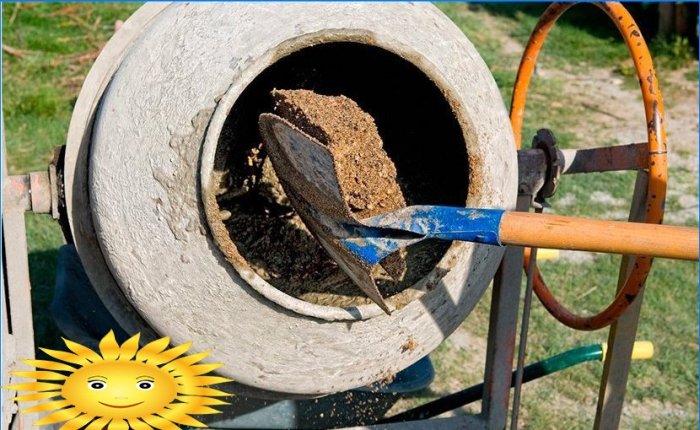
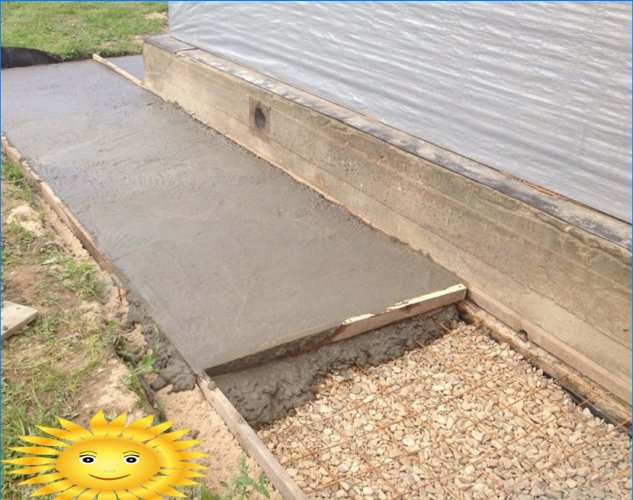

What are the key steps to follow when creating a concrete blind area around the house on your own? Could you provide a detailed step-by-step guide for someone who wants to tackle this project themselves?
This is a very helpful article on creating a DIY concrete blind area around the house. However, I would like to ask if there are any specific tools or equipment required for this project, and if there are any safety precautions we should keep in mind while working with concrete?